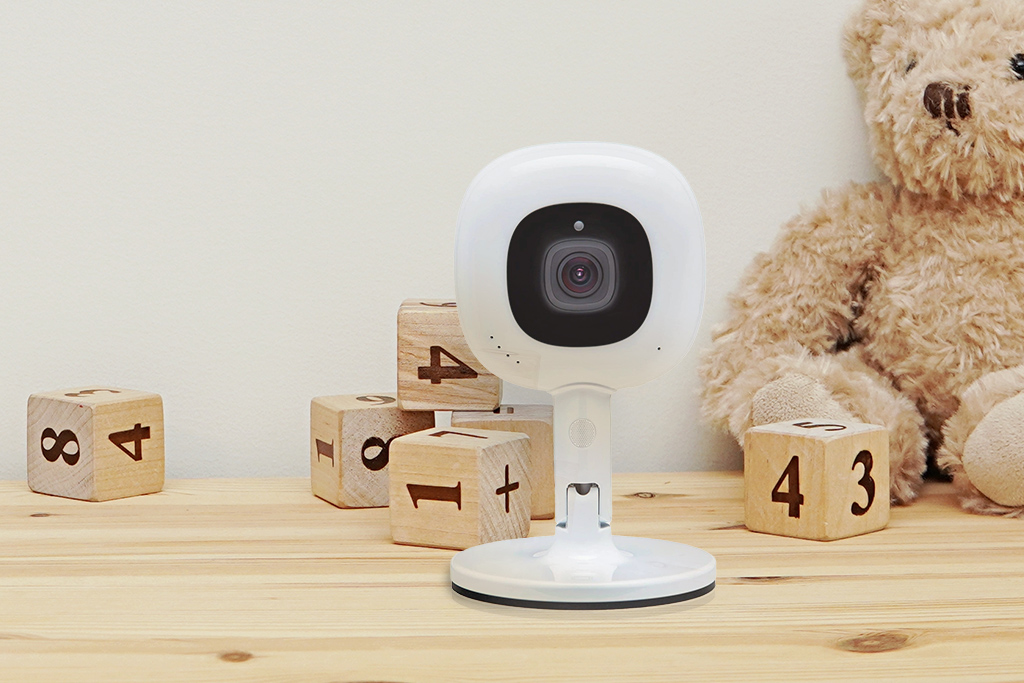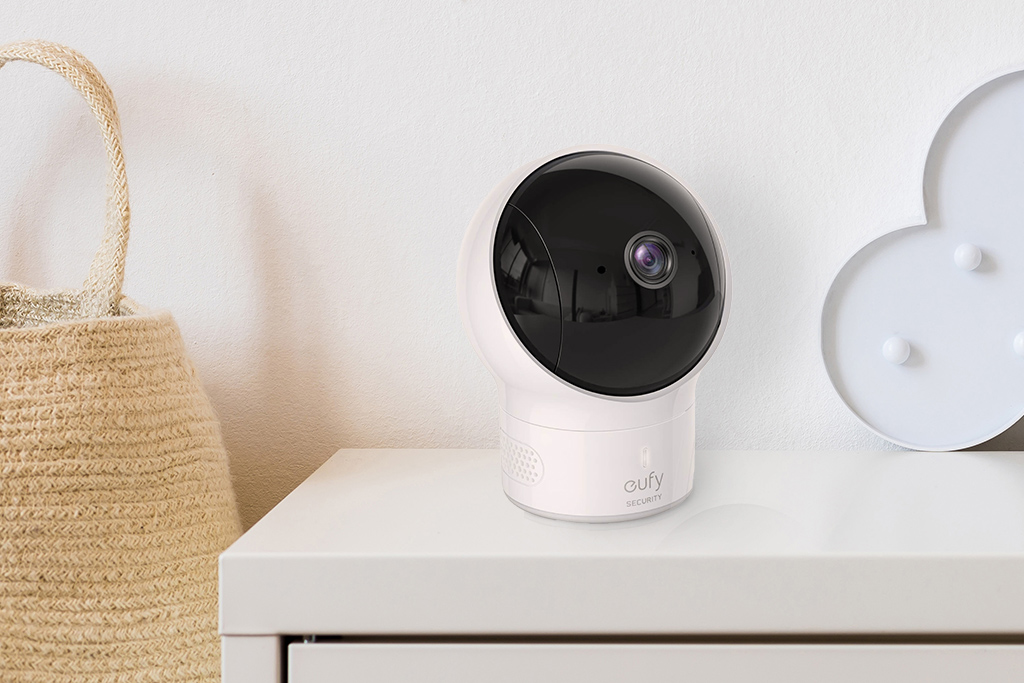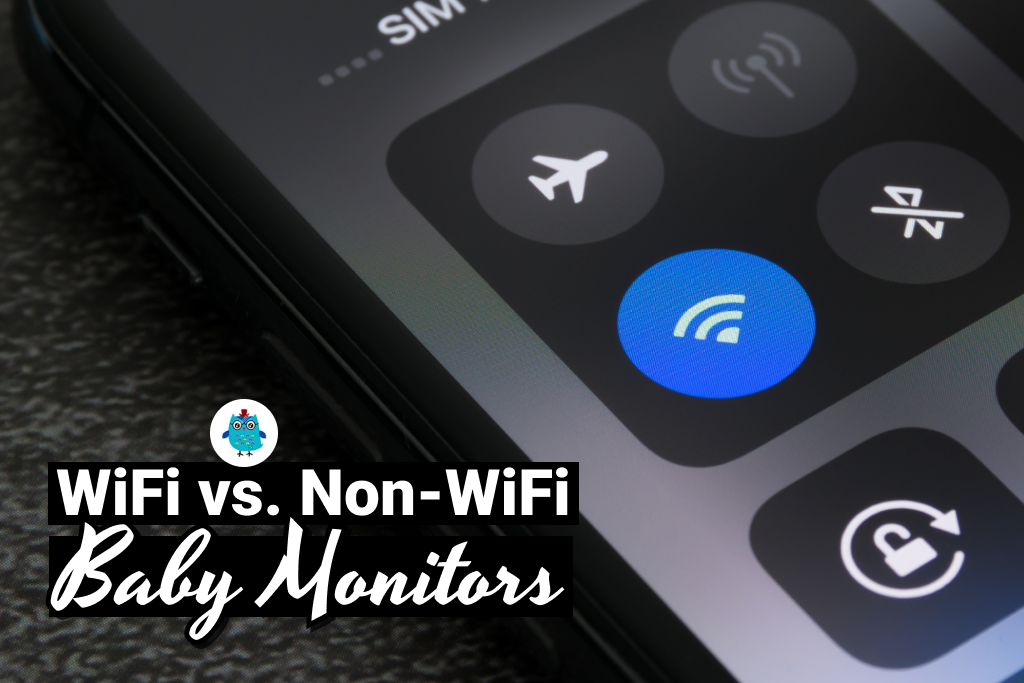Explore the difference between WiFi vs. non-WiFi baby monitors. You’ll learn how WiFi baby monitors work and if you should get one for your family.
Not all baby monitors need WiFi, as there are non-WiFi options like audio-only and video monitors. The key difference between WiFi and non-WiFi monitors is how they transmit information. WiFi monitors use the internet for signal transmission, offering remote access and advanced features. In contrast, non-WiFi monitors use radio frequencies, providing limited range and fewer features.
Parenting for me has been like a rollercoaster ride. I remember those nights I’d peek into the nursery every 15 minutes. Driven by a nagging worry that something might be wrong with the baby monitor. I was questioning the reliability of my baby monitor and the WiFi connection.
You might be on the same ride. Or you are still in the rollercoaster lineup. Trying to figure out if all baby monitors need WiFi or if you’ll be better off going for a non-wifi option.
You’re not alone in feeling overwhelmed by the countless options and features available in baby monitors today. It’s enough to make anyone’s head spin! That’s why I wanted to create this guide. So you can confidently choose the baby monitors that will give you much-needed peace of mind.
This article will cover the followings:
- WiFi Baby Monitors
- Non-WiFi Baby Monitors
- Comparison: WiFi vs. Non-WiFi Baby Monitor
- Factors to Consider When Choosing a Baby Monitor
- Top Baby Monitor Recommendations
- Conclusion
Hang in there. We’re about to roll down into the world of WiFi baby monitors.
If you’re seeking for the best baby monitor and hoping to find real reviews from real parents. You should check out this list I created of the top baby monitors.
🤗 Transparency Statement: This page may contain affiliate links. If you make a purchase through these links, I may earn a commission at no extra cost to you. Rest assured, I only promote products I trust. Thanks for your support!
WiFi Baby Monitors: The Future is Now!
I know the anxiety that comes with wanting to keep your kids safe all the time. You might wonder if WiFi baby monitors are the best choice for your family. WiFi baby monitors are the modern answer to our parenting prayers.
What are WiFi Baby Monitors?
These high-tech gadgets connect to your home’s WiFi network. Allowing you to access the video and audio feed through an app. With internet access, you can keep an eye on your little one from practically anywhere. Whether you’re at work or just in the backyard.
Trust me, as a dad who likes to do yard work when the babies are napping, it’s a game-changer.
When my first child was born, I remember pacing around the house, constantly checking the baby monitor to ensure everything was okay. But with a WiFi baby monitor, I could keep an eye on my second child even while mowing the lawn.
The Pros and Cons of WiFi Baby Monitors
When choosing a baby monitor, I understand that weighing the pros and cons when deciding between WiFi and non-WiFi options is essential. So let’s break down the advantages and disadvantages!
- Remote access and Internet reliance: With a WiFi baby monitor, you can check on your baby from virtually anywhere with an Internet connection. The main drawback of WiFi baby monitors is that they depend on a stable internet connection. If your home’s WiFi goes down or experiences interference, you may temporarily lose access to the monitor.
- Security concerns: While most WiFi baby monitors use secure connections, there’s always a risk of hacking when using internet-connected devices. For more information, I wrote a complete article about WiFi baby monitors safety.
- Use your smartphone: You don’t need to carry around an extra device. You can use your mobile to monitor your child. But this means you must look at your phone constantly, which could drain the battery faster and interfere with other phone usage.
- Extra features, Extra Cost: Some WiFi baby monitors allow you to connect multiple cameras to a single app, making monitoring multiple children or rooms in your home easy. They also often come with added features like temperature and humidity sensors, two-way communication, and even lullaby players. However, WiFi baby monitors can be more expensive than non-WiFi due to the additional features and technology.
I’ve experienced the convenience of a WiFi baby monitor, but I also understand the appeal of traditional non-WiFi monitors. So, let’s explore their counterparts!
Non-WiFi Baby Monitors: Tried and True Classics
You might be wondering if all baby monitors need WiFi, and the answer is no. While we’ve covered WiFi baby monitors, let’s not forget about their trusty counterparts. As careful consumers, it’s essential to know all our options when it comes to baby monitors.
What are Non-WiFi Baby Monitors?
Non-WiFi baby monitors are the traditional choice. Typically use radio frequencies or digital signals to transmit audio and, in some cases, video from your baby’s room to a dedicated parent unit. They don’t require an internet connection, making them a more reliable option in homes with spotty WiFi.
Types of Non-WiFi Baby Monitors
In the categories of non-WiFi baby monitors, there are a few types to choose from:
- Audio-Only Baby Monitors: These trusty monitors focus solely on transmitting audio from your baby’s room to your parent unit. They’re perfect for parents who want a simple, no-frills solution to keep an ear on their little one.
- Video Baby Monitors: Taking it up a notch, video baby monitors provide both audio and video, allowing you to see and hear your baby. They typically come with a camera and a dedicated screen on the parent unit.
- Smart Baby Monitors: While these monitors still fall under the non-WiFi category, they offer more advanced features, such as tracking your baby’s sleep patterns, room temperature, and humidity levels. Some even come with movement sensors or built-in nightlights. Remember that these extra features might require a Bluetooth connection to your smartphone, so they’re not entirely internet-free.
I remember using a non-WiFi baby monitor with my first child. It was a simple audio monitor, and it worked like a charm. I could hear every little sound my baby made. Today, I still use it when we go camping, and I can trust it to alert me if there are any issues.
The Pros and Cons of Non-WiFi Baby Monitors
- Easy setup and reliability: Non-WiFi baby monitors are often easier to set up than their WiFi counterparts, requiring minimal technical know-how. Plus, they don’t rely on an internet connection, which means fewer connectivity issues. However, the simplicity comes at a cost. Non-WiFi monitors may have a limited range compared to WiFi monitors, making it challenging to monitor your baby if you’re far from their room.
- Privacy and security: With no internet connection required, non-WiFi baby monitors are less vulnerable to hacking and data breaches, giving you extra peace of mind. While privacy is a strength, some older analog models can be susceptible to interference or signal crossover with other electronic devices or neighbors’ monitors. Opt for a digital model to avoid this issue.
- Features and expandability: Non-WiFi baby monitors offer a range of options, from simple audio-only monitors to video and smart monitors with advanced features. Still, these monitors typically have fewer features than WiFi monitors. They are less likely to offer expandability options like connecting multiple cameras.
Ready for the showdown? Let’s compare WiFi and non-WiFi baby monitors.
The Ultimate Showdown: WiFi vs. Non-WiFi Baby Monitors
Time to put WiFi and non-WiFi baby monitors head-to-head. We’ll look at connectivity and range, security and privacy, features and functionality, remote access, and cost and value.
Connectivity and Range
- WiFi Monitors: With a strong internet connection, WiFi baby monitors offer a more extensive range, allowing you to monitor your baby from anywhere in your home or even when you’re away. The range depends on the strength of your internet connection. Still, it can offer coverage throughout your entire home and even beyond. Some models claim a range of up to 300-400 feet indoors and over 1,000 feet outdoors.
- Non-WiFi Monitors: These monitors have a limited range compared to WiFi monitors, which can be a concern if you have a larger home or want to monitor your baby from a distance. The range is usually between 600-1,000 feet. Still, it can be reduced by factors such as thick walls, electronic devices, or other obstacles.
Security and Privacy
- WiFi Monitors: These monitors can be vulnerable to hacking and data breaches if not properly secured. Ensure your monitor uses encryption and follows best practices to keep your connection safe.
- Non-WiFi Monitors: With no internet connection required, non-WiFi monitors are less prone to hacking, providing better privacy. However, older analog models can be susceptible to interference from other electronic devices (like microwaves and cordless phones) or even other baby monitors in the neighborhood. Opt for a digital model with DECT (Digital Enhanced Cordless Telecommunications) technology to reduce interference.
Features and Functionality
- WiFi Monitors: These monitors often come with more advanced features, like two-way communication, remote-controlled cameras, and integration with smart home systems. Convenient for parents who want to control their baby monitor using voice commands or integrate it into a larger smart home system.
- Non-WiFi Monitors: While offering fewer features, non-WiFi monitors still provide a range of options, including audio-only, video, and smart monitors with advanced functionalities.
Remote Access
- WiFi Monitors: The key advantage of WiFi monitors is the ability to access the feed remotely through your smartphone, offering peace of mind even when you’re not at home. Even when you’re at home, remote access can be beneficial. You could be in a different part of the house, like the basement or backyard.
- Non-WiFi Monitors: These monitors don’t provide remote access, limiting their monitoring capabilities to a specific range within your home.
Cost and Value
- WiFi Monitors: WiFi baby monitors are generally more expensive due to their advanced features and remote capabilities. These monitors typically range from $100 to $300, depending on the brand and features included. High-end models with advanced features can cost over $300.
- Non-WiFi Monitors: These monitors are more affordable, offering a cost-effective solution for parents who prefer a simpler monitoring experience. Prices vary from $20 for basic audio-only models to $200 for high-quality video monitors with advanced features.
As a dad who’s tried WiFi and non-WiFi baby monitors, I’ve found that each type has unique advantages and drawbacks.
Grab your thinking cap because it’s time to weigh the factors.
What to Consider: Choosing the Perfect Baby Monitor
When it comes to finding the right baby monitor, you should consider a few key factors. You might choose a WiFi baby monitor over a non-WiFi one for various reasons. As parents, we all have different priorities, so take a moment to consider what’s most important for you and your family.
Here are the situations that would make a WiFi baby monitor the obvious choice.
- Large living space to cover: WiFi baby monitors generally have a longer range than non-WiFi monitors, making them a better option for families living in larger homes where the signal may not reach as far as a non-WiFi monitor.
- Remote access: WiFi baby monitors allow parents to check on their baby from anywhere with internet access, not just within the home. This feature can benefit parents who work outside the home or need to step away for a short period.
- Multiple users: WiFi baby monitors often allow multiple users to access the video and audio feed simultaneously, making it easier for grandparents, babysitters, or other caregivers to stay informed about the baby’s well-being.
- Integration with smart home devices: WiFi baby monitors can often be integrated with smart home systems or devices, such as Amazon Alexa or Google Home, allowing for voice-activated controls and added convenience.
- Advanced features: WiFi baby monitors may come with additional features, such as motion and sound alerts, temperature and humidity monitoring, and two-way communication, which can provide added peace of mind and improve overall monitoring capabilities.
- Video storage: Some WiFi baby monitors offer cloud storage or local storage options for recorded video footage, allowing parents to review past events or share precious moments with family and friends.
Keep in mind that each family’s needs and priorities are unique. Whichever type of baby monitor you choose, remember that the ultimate goal is to keep your child safe and give yourself peace of mind.
Feeling overwhelmed? Don’t worry. I’ve got some top baby monitor recommendations to help you out!
The Cream of the Crop: Top Baby Monitor Recommendations
It’s time to share some of my top baby monitor picks! I’ve compiled a list of the best WiFi and non-WiFi baby monitors based on my experiences, other parents’ stories, and expert advice. These recommendations will help you keep your child safe and provide you with peace of mind.
Best WiFi Baby Monitors

The Nanit is a premium, WiFi-enabled baby monitor with advanced features like sleep tracking and personalized coaching. It’s popular with parents looking for a more comprehensive solution for monitoring their baby’s sleep and well-being.
- It features HD video and audio, allowing clear monitoring of your baby’s movements and sounds.
- The Nanit Baby Monitor uses computer vision technology to track and analyze your baby’s sleep patterns, providing actionable insights and personalized sleep coaching tips.
- The monitor has a built-in nightlight, two-way audio communication, and room temperature and humidity sensors.
- Nanit’s “Breathing Wear” is an optional accessory that tracks your baby’s breathing without using electronic devices, providing additional peace of mind for parents.
- The monitor’s sleek and modern design, with an adjustable stand that can be mounted on the wall or used with a floor stand.
- The Nanit Baby Monitor’s price point is higher. Still, the advanced features and data-driven insights may justify some parents’ costs.
For more information, please read my complete review of the Nanit , and when you are ready to make a purchase check it out on Amazon here.
, and when you are ready to make a purchase check it out on Amazon here.
Best Non-WiFi Baby Monitors

The Eufy is a reliable and feature-rich non-WiFi video baby monitor. It provides a secure and private connection for parents prioritizing privacy and a high-quality video feed.
- The monitor has a 5-inch 720p display on the parent unit, offering a large and detailed view of your baby’s room.
- The Eufy SpaceView has a wide-angle lens attachment, allowing for a broader view of the nursery.
- The monitor’s camera can pan 330 degrees and tilt 110 degrees, enabling comprehensive coverage of the baby’s room.
- It includes two-way audio communication, a room temperature sensor, and a built-in lullaby player to soothe your baby.
- The Eufy SpaceView has a range of up to 460 meters (1,500 feet), making it suitable for most homes.
- With a mid-range price point, the Eufy SpaceView Baby Monitor balances affordability and advanced features.
For more information, please read my complete review of the Eufy , and when you are ready to make a purchase check it out on Amazon here.
, and when you are ready to make a purchase check it out on Amazon here.
Alright, time to wrap it up and get you on your way to becoming the best mom or dad you can be!
Conclusion
As we’ve learned, WiFi baby monitors offer remote access and advanced features. While non-WiFi monitors provide a reliable connection without relying on the internet. Your choice may depend on factors such as your need for portability or remote access and your budget.
For those of you leaning towards a WiFi baby monitor, I recommend the Nanit baby monitor. After doing a full review of the Nanit Baby Monitor, I’m sure it’ll also be a great fit for yours. With its impressive range of features and reliable performance, you can keep a watchful eye on your little one while enjoying some much-needed peace of mind. As for price, check the Nanit on Amazon here.
With the right baby monitor, you’ll be ready to tackle parenthood head-on, knowing that your precious bundle of joy is safe and sound.
You got this!
P.S. If you’re seeking for the best baby monitor and hoping to find real reviews from real parents. You should check out this list I created of the top baby monitors
To get the best insights and tips to find the best baby monitor, I read more than 300 reviews online and ask my friends or others parents. From all their insights and my own experience, I’ve built this list of the best baby monitors.
Still unsure about the monitor? Here are some other types of baby monitor you should also consider for your nursery:

